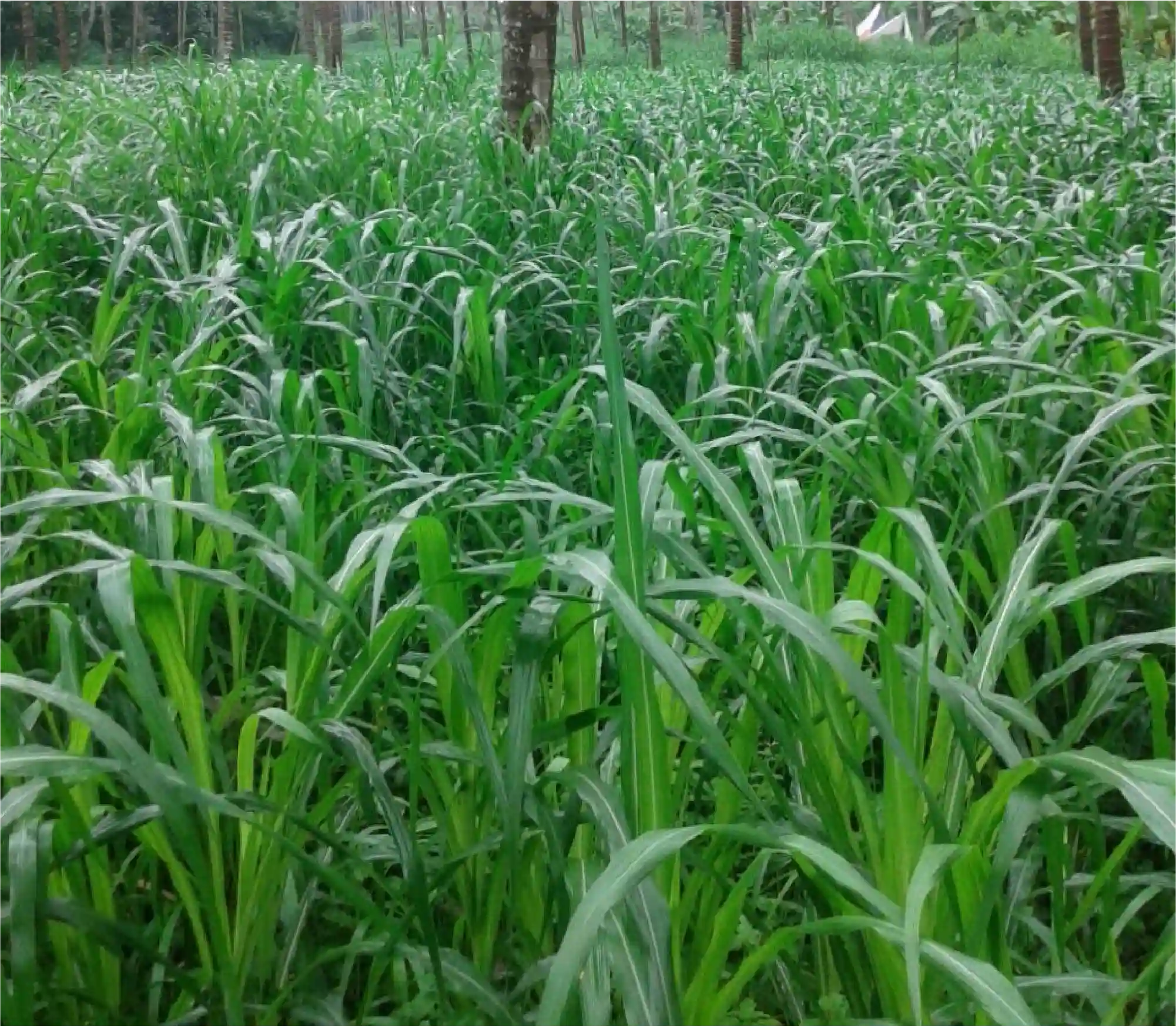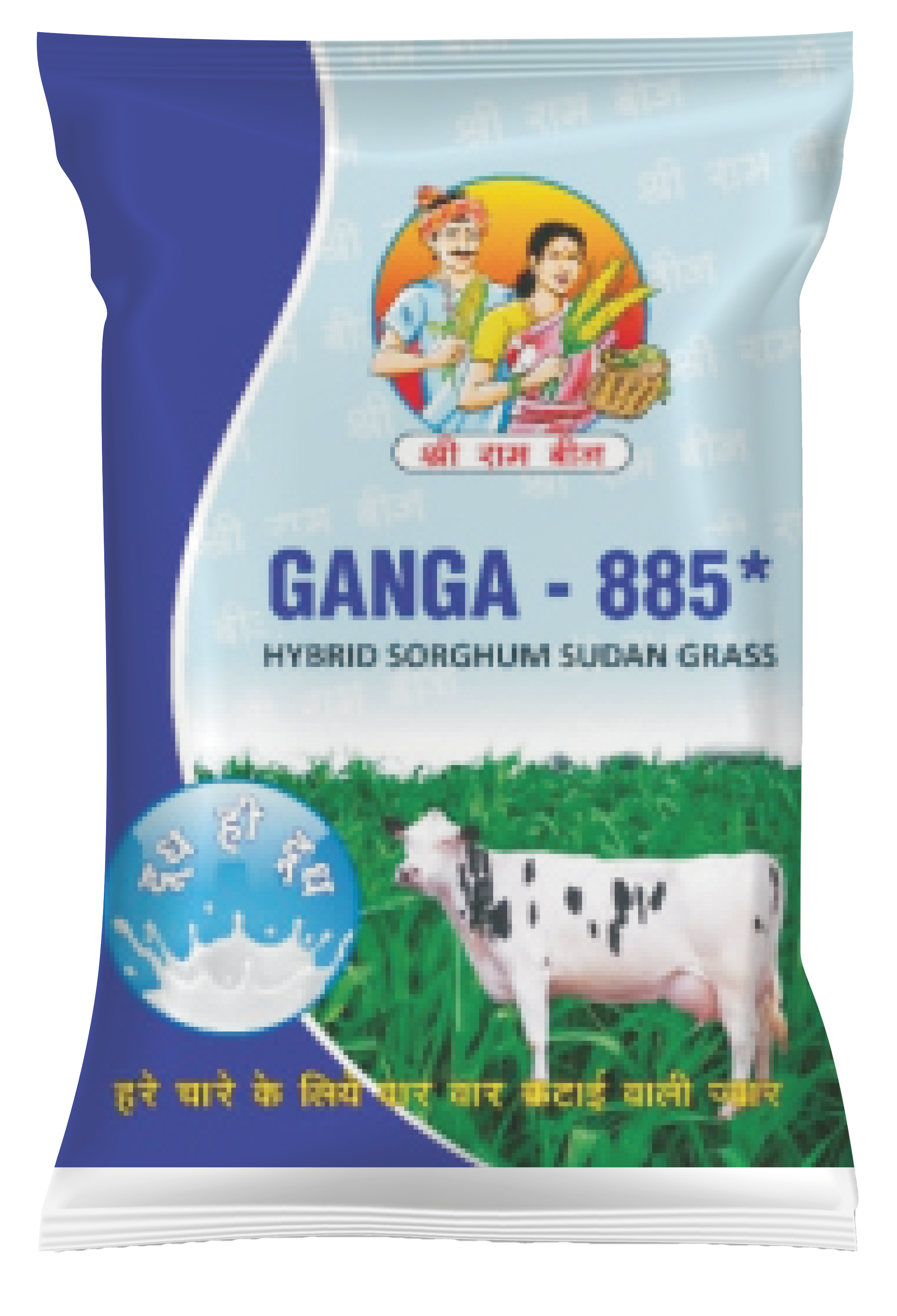Fast-Growing Hybrid Bajra for Multiple Cuttings and High
Fodder Yield
GANGA-885 is a high-performance F1-hybrid bajra (pearl
millet) variety, developed for rapid growth, multiple
cuttings, and excellent adaptability to different soil
types. With a maturity period of just 40 days and a plant
height of 6–8 feet, this variety is ideal for rainfed and
upland irrigated conditions. Its strong foliar disease
resistance and high tolerance to alkaline soils (high pH)
ensure healthy growth and consistent fodder production. With
4–5 cuttings per season, GANGA-885 is a top choice for dairy
farmers and livestock owners looking for a reliable and
nutritious fodder crop.
Challenges & Solutions
Fodder production often faces challenges such as slow
regrowth after cutting, low disease resistance, and poor
adaptability to alkaline soils. GANGA-885 is bred to address
these issues and ensure sustainable and high-yield fodder
farming.
Challenges
Common difficulties in bajra fodder farming include:
-
Low Disease Resistance in Conventional Varieties
-
Limited Cuttings Due to Weak Regrowth
-
Poor Performance in High pH or Alkaline Soils
-
Slow Growth Leading to Delayed Harvesting
Solutions
GANGA-885 provides exceptional benefits for fodder
producers:
-
Great Foliar Disease Resistance & Strong Durability
-
4–5 Cuttings for Continuous Fodder Supply
-
High pH and Alkaline Soil Tolerance & Adaptability
-
Fast Growth (40 Days Maturity)
Performance and Profitability
Yield Potential (Qtl./Acre):
GANGA-885 provides multiple high-quality fodder cuttings,
ensuring better farm profitability.
Adoption Rate:
Farmers prefer GANGA-885 for its rapid regrowth, excellent
disease resistance, and multiple cuttings.
Farm Profitability:
With low seed input and continuous yield cycles, GANGA-885
provides outstanding returns on investment.
Market Demand:
The superior quality fodder and strong plant structure make
GANGA-885 a top choice for livestock feed producers and
dairy farmers.









